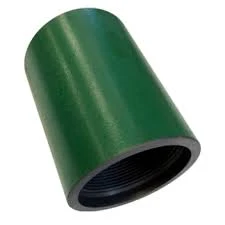- Afrikaans
- Albanian
- Amharic
- Arabic
- Armenian
- Azerbaijani
- Basque
- Belarusian
- Bengali
- Bosnian
- Bulgarian
- Catalan
- Cebuano
- Corsican
- Croatian
- Czech
- Danish
- Dutch
- English
- Esperanto
- Estonian
- Finnish
- French
- Frisian
- Galician
- Georgian
- German
- Greek
- Gujarati
- Haitian Creole
- hausa
- hawaiian
- Hebrew
- Hindi
- Miao
- Hungarian
- Icelandic
- igbo
- Indonesian
- irish
- Italian
- Japanese
- Javanese
- Kannada
- kazakh
- Khmer
- Rwandese
- Korean
- Kurdish
- Kyrgyz
- Lao
- Latin
- Latvian
- Lithuanian
- Luxembourgish
- Macedonian
- Malgashi
- Malay
- Malayalam
- Maltese
- Maori
- Marathi
- Mongolian
- Myanmar
- Nepali
- Norwegian
- Norwegian
- Occitan
- Pashto
- Persian
- Polish
- Portuguese
- Punjabi
- Romanian
- Russian
- Samoan
- Scottish Gaelic
- Serbian
- Sesotho
- Shona
- Sindhi
- Sinhala
- Slovak
- Slovenian
- Somali
- Spanish
- Sundanese
- Swahili
- Swedish
- Tagalog
- Tajik
- Tamil
- Tatar
- Telugu
- Thai
- Turkish
- Turkmen
- Ukrainian
- Urdu
- Uighur
- Uzbek
- Vietnamese
- Welsh
- Bantu
- Yiddish
- Yoruba
- Zulu
coupling for tubing
Understanding Coupling for Tubing Essential Insights
In the realm of engineering, especially within the oil and gas industry, the term coupling refers to a mechanism that connects two sections of tubing to facilitate the transfer of fluids and gases. Couplings play a crucial role in ensuring the integrity and efficiency of tubing systems, which are essential for drilling, production, and transportation processes. This article delves into the types, materials, applications, and importance of couplings in tubing.
Types of Couplings
There are several types of couplings, each designed for specific applications within tubing systems. The most common types include
1. Screwed Couplings These couplings involve threaded connections that allow for easy assembly and disassembly. They are widely used in situations where temporary connections are required.
2. Welded Couplings These provide a permanent bond between tubing sections, offering strong resistance to high pressures. Welded couplings are often used in high-stress environments and are critical in ensuring the safety and reliability of tubing systems.
3. Flanged Couplings Flanged connections feature protruding edges that allow for bolts to secure two sections of tubing. This type facilitates easier access for maintenance and cleaning, making it ideal for systems requiring regular inspections.
4. Compression Couplings These are ideal for joining different types of tubing materials. The tubing is inserted into the coupling, and a compression mechanism secures it tightly, preventing leaks.
Materials Used in Couplings
The choice of material for couplings is vital, as it affects durability, resistance to corrosion, and overall performance. Common materials include
- Steel Known for its strength and durability, steel couplings are often used in high-pressure applications. However, they can be prone to corrosion. - Stainless Steel This material offers excellent resistance to corrosion, making it suitable for harsh environments. Stainless steel couplings are commonly used in chemical plants and offshore applications.
- Plastic Lightweight and resistant to corrosion, plastic couplings are often used in less demanding applications where weight reduction is essential.
- Bronze and Brass These materials provide a good balance between strength and corrosion resistance, making them suitable for applications in marine environments.
Applications of Couplings in Tubing Systems
coupling for tubing

Couplings find applications in various industries beyond oil and gas. They are integral to
- Water Supply Systems Ensuring the safe and efficient transport of water to residential and industrial facilities.
- Chemical Processing Providing secure connections that prevent leaks and ensure the safe handling of hazardous materials
.- HVAC Systems Facilitating the transfer of air and refrigerants in heating, ventilation, and air conditioning systems.
- Mining Connecting tubing in drilling and other mining operations to transport materials efficiently.
Importance of Couplings in Tubing
The significance of couplings in tubing cannot be overstated. They provide the following benefits
1. Leak Prevention Properly designed couplings minimize the risk of leaks, which can lead to catastrophic failures and environmental hazards.
2. Pressure Management Couplings ensure that systems can safely handle high pressures, essential for maintaining operational integrity.
3. Ease of Maintenance Depending on the type of coupling, technicians can easily access and service tubing systems, reducing downtime and maintenance costs.
4. System Versatility Different coupling types enable engineers to design flexible systems capable of adapting to various operational needs.
Conclusion
In conclusion, couplings are an indispensable component of tubing systems across diverse industries. Their design and material choice are crucial in ensuring the safe and efficient transfer of fluids and gases. As technology advances, developments in coupling designs will continue to enhance performance and reliability, further solidifying their role in modern engineering applications. Understanding the importance and functionality of couplings is vital for professionals involved in the design, installation, and maintenance of tubing systems.
-
Tubing Pup Joints: Essential Components for Oil and Gas OperationsNewsJul.10,2025
-
Pup Joints: Essential Components for Reliable Drilling OperationsNewsJul.10,2025
-
Pipe Couplings: Connecting Your World EfficientlyNewsJul.10,2025
-
Mastering Oilfield Operations with Quality Tubing and CasingNewsJul.10,2025
-
High-Quality Casing Couplings for Every NeedNewsJul.10,2025
-
Boost Your Drilling Efficiency with Premium Crossover Tools & Seating NipplesNewsJul.10,2025







